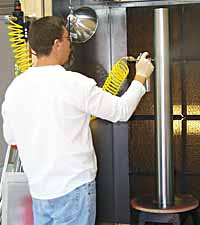TheAviator
Well-Known Member
- Joined
- Jan 18, 2009
- Messages
- 935
- Reaction score
- 122
When dealing with F3K, they're trying to hold surfaces to a 1-2 thousandths tolerance, so the tooling reflects that. The vacuum hold down allows the second side of the wing to be cut without any (or very little) manual clean up afterward. Since you don't need that kind of tolerance, you can be a little more liberal with your mold making. If you're going to use MDF as a mold material, I recommend using laminating epoxy to coat the surface. That should give you a good enough surface for a clean release.
























